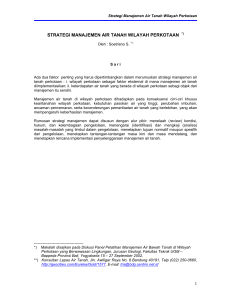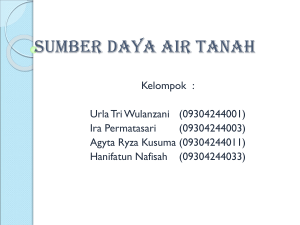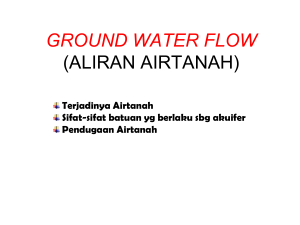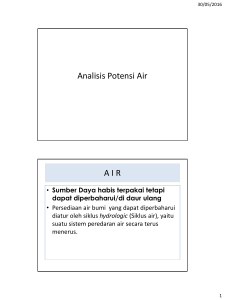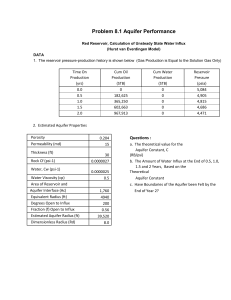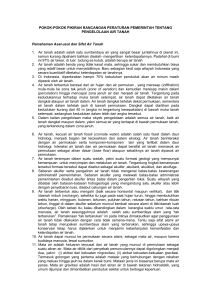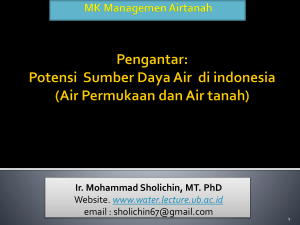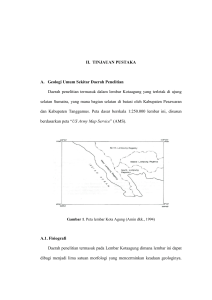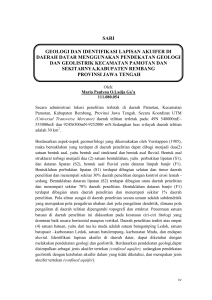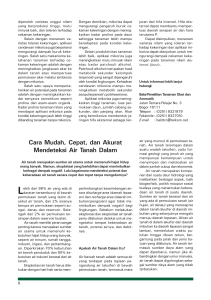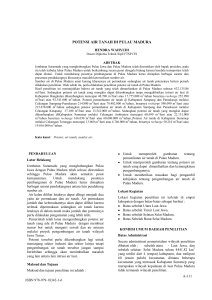xiv SARI Air tanah merupakan salah satu kebutuhan mutlak bagi
advertisement
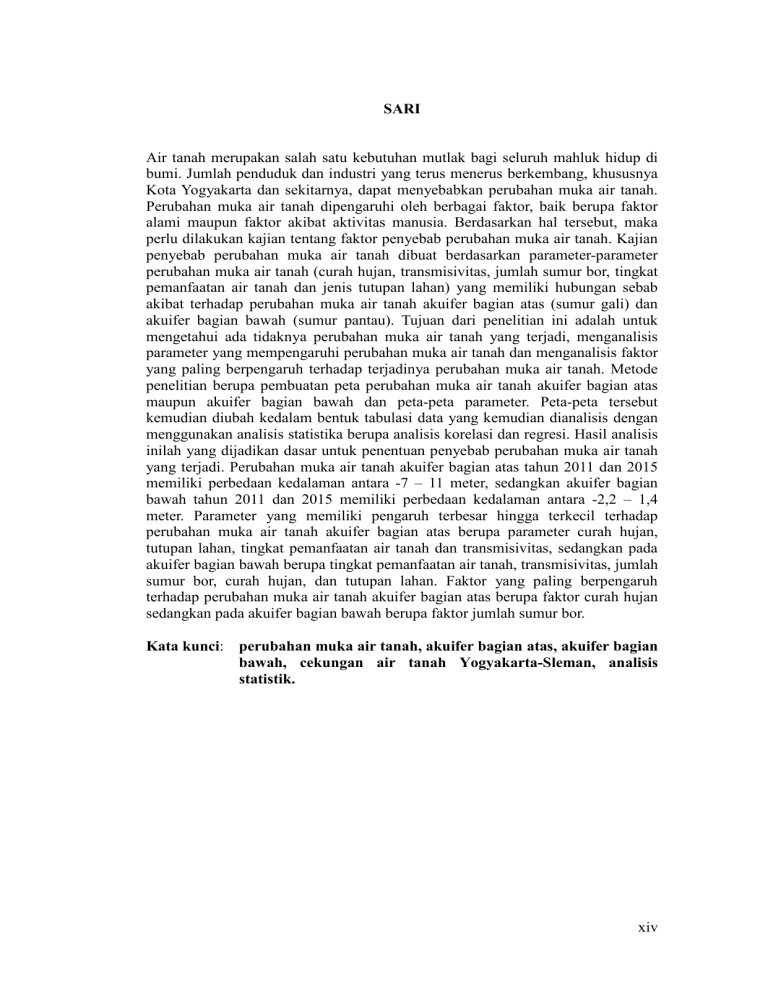
SARI Air tanah merupakan salah satu kebutuhan mutlak bagi seluruh mahluk hidup di bumi. Jumlah penduduk dan industri yang terus menerus berkembang, khususnya Kota Yogyakarta dan sekitarnya, dapat menyebabkan perubahan muka air tanah. Perubahan muka air tanah dipengaruhi oleh berbagai faktor, baik berupa faktor alami maupun faktor akibat aktivitas manusia. Berdasarkan hal tersebut, maka perlu dilakukan kajian tentang faktor penyebab perubahan muka air tanah. Kajian penyebab perubahan muka air tanah dibuat berdasarkan parameter-parameter perubahan muka air tanah (curah hujan, transmisivitas, jumlah sumur bor, tingkat pemanfaatan air tanah dan jenis tutupan lahan) yang memiliki hubungan sebab akibat terhadap perubahan muka air tanah akuifer bagian atas (sumur gali) dan akuifer bagian bawah (sumur pantau). Tujuan dari penelitian ini adalah untuk mengetahui ada tidaknya perubahan muka air tanah yang terjadi, menganalisis parameter yang mempengaruhi perubahan muka air tanah dan menganalisis faktor yang paling berpengaruh terhadap terjadinya perubahan muka air tanah. Metode penelitian berupa pembuatan peta perubahan muka air tanah akuifer bagian atas maupun akuifer bagian bawah dan peta-peta parameter. Peta-peta tersebut kemudian diubah kedalam bentuk tabulasi data yang kemudian dianalisis dengan menggunakan analisis statistika berupa analisis korelasi dan regresi. Hasil analisis inilah yang dijadikan dasar untuk penentuan penyebab perubahan muka air tanah yang terjadi. Perubahan muka air tanah akuifer bagian atas tahun 2011 dan 2015 memiliki perbedaan kedalaman antara -7 – 11 meter, sedangkan akuifer bagian bawah tahun 2011 dan 2015 memiliki perbedaan kedalaman antara -2,2 – 1,4 meter. Parameter yang memiliki pengaruh terbesar hingga terkecil terhadap perubahan muka air tanah akuifer bagian atas berupa parameter curah hujan, tutupan lahan, tingkat pemanfaatan air tanah dan transmisivitas, sedangkan pada akuifer bagian bawah berupa tingkat pemanfaatan air tanah, transmisivitas, jumlah sumur bor, curah hujan, dan tutupan lahan. Faktor yang paling berpengaruh terhadap perubahan muka air tanah akuifer bagian atas berupa faktor curah hujan sedangkan pada akuifer bagian bawah berupa faktor jumlah sumur bor. Kata kunci: perubahan muka air tanah, akuifer bagian atas, akuifer bagian bawah, cekungan air tanah Yogyakarta-Sleman, analisis statistik. xiv ABSTRACT Groundwater is one of the absolute needs for all the living things on earth. The development of industries and populations especially in Yogyakarta and its vicinity will change the water table. There are several factors that can change the water table including the natural factors and anthropogenic factors. Because of that, it’s necessary to investigate the factors that make the water table change. The investigation consists of several water table parameters (rainfall, transmissivity, the number of drilling well, the rate of groundwater usage and land cover) which has causality relationship toward the water table changes on the upper aquifer (shallow well) and the lower aquifer (observing well). The objectives of this research are to know whether the water tables has changed or not, to analyze the parameters affecting the water table change and to analyze the most influential factor in the water table change. The method of the research consists of making the water table changes map on the upper and lower aquifer and parameters map. The maps are converted to tabulation data using statistical analyses like correlation analyses and regression analyses. The result of these analyses are used to determine the cause of water table change. The water table change on the upper aquifer in 2011 and 2015 has different depth about -7 - 14 meter whereas the lower aquifer in 2011 and 2015 is -2,2 - 1,4 meter. The largest and the smallest influence of the parameters toward the water table change on the upper aquifer respectively are rainfall parameter, land cover, the rate of groundwater usage and transmissivity. In the other hand, the influences of the parameters on the lower aquifer are the rate of groundwater usage, transmissivity, the number of drilling well, rain fall, and land cover. The most influence factor to the water table change on the upper aquifer is rain fall whereas on the lower aquifer is the number of drilling well. Keywords: the water table change, upper aquifer, lower aquifer, groundwater basin of Yogyakarta-Sleman, statistical analysis. xv
